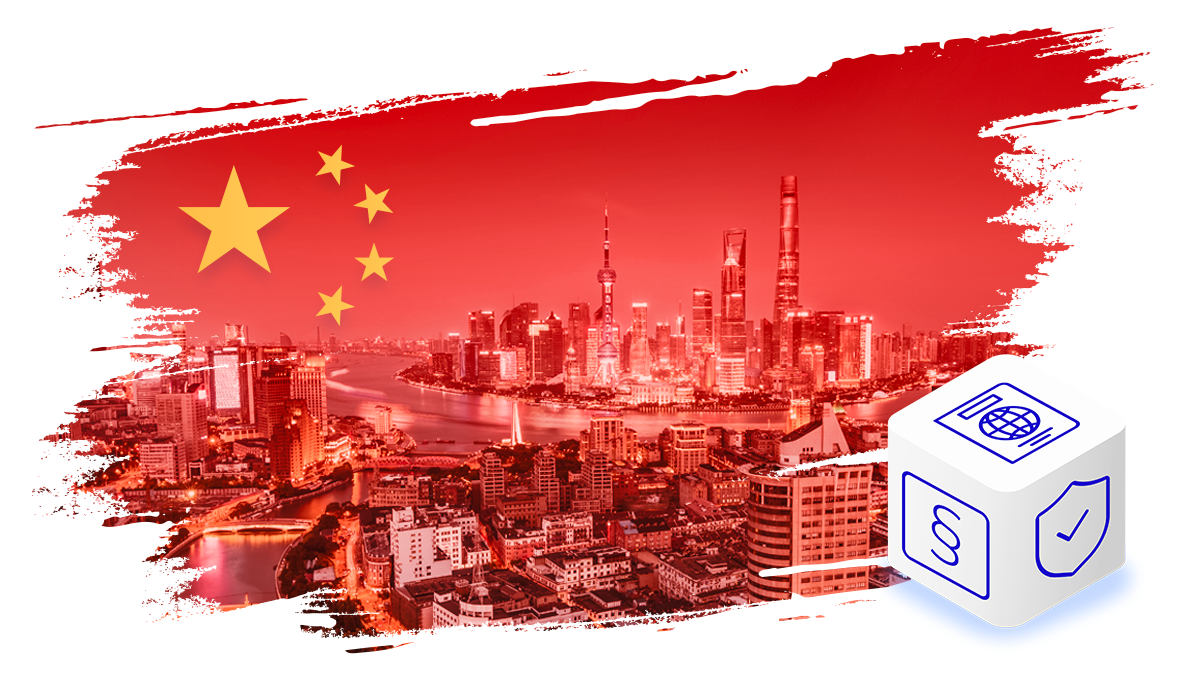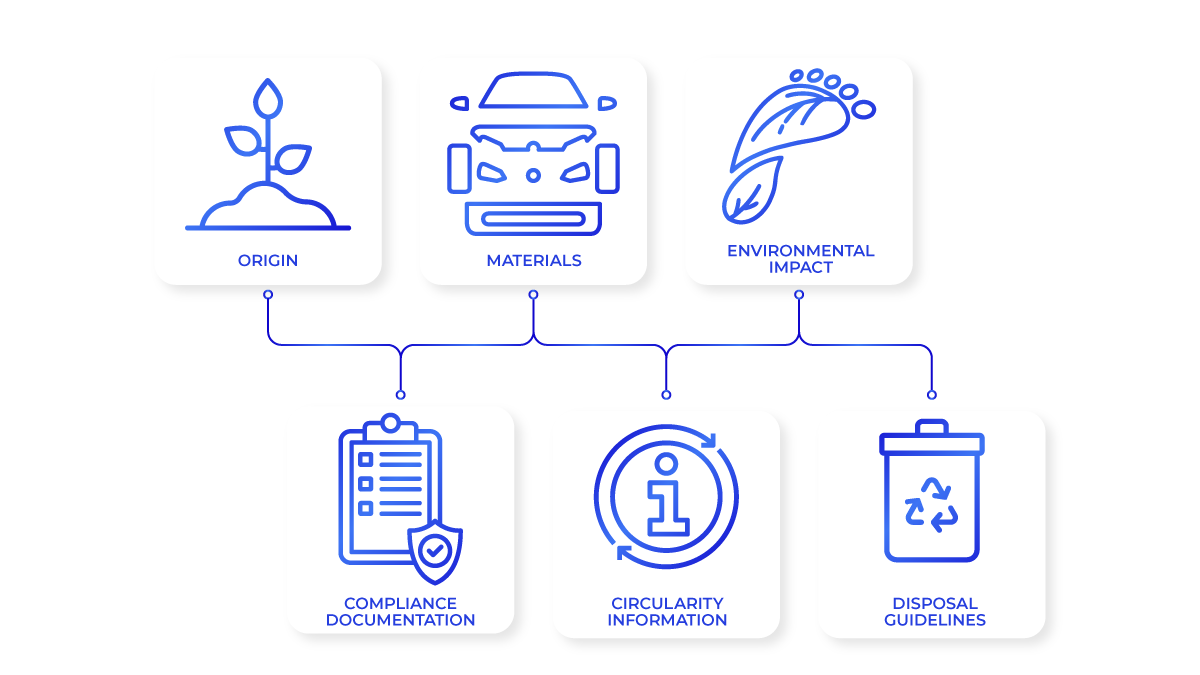How Chinese Retailers Can Respond to the EU’s Digital Product Passport Rules

Table of Contents
- What Is the DPP, in Practice?
- What Happens If Chinese Retailers Don’t Comply With DPP Requirements
- Why the DPP Is Critical for Chinese Retailers Selling in Europe
- 4 Common Compliance Challenges for Chinese Retailers
- 5 Actionable Steps for Chinese Exporters to Comply With the EU DPP
- Timeline: When Chinese Sellers Must Comply With the EU DPP
- 5 Essential Steps for Retailers to Respond to the EU’s DPP Regulation
- How Bluestone PIM Helps Retailers Meet EU DPP Requirements
- Why Chinese Retailers Can’t Wait for EU-China DPP Harmonisation
We read the boring EU docs so you don’t have to
Sign up for early updates on Digital Passport regulations and real-world steps to get your product data ready.
Temu and similar Chinese marketplaces have made significant inroads into the European market. However, new regulation is poised to raise the bar. The EU is introducing a Digital Product Passport (DPP) requirement under the Ecodesign for Sustainable Products Regulation (ESPR). It is not limited to European companies but anyone selling into the EU must comply.
Chinese exporters must prepare on the assumption that direct compliance with EU standards will be necessary.
What Is the DPP, in Practice?
The Digital Product Passport is a digital record associated with a product, detailing:
-
Where it was manufactured
-
What materials it contains
-
How it can be reused, recycled, or disposed of
-
Its carbon footprint and compliance with environmental standards
This information must be machine-readable and accessible via QR code or RFID tag. For Chinese exporters, this entails delivering structured, traceable data across the entire supply chain.
What Happens If Chinese Retailers Don’t Comply With DPP Requirements
Non-compliance carries serious implications, including:
- Products being stopped at EU borders
- Delisting from major online marketplaces
- Substantial fines based on turnover
- Loss of access to rare earth elements (REEs) if export regulations are violated
Why the DPP Is Critical for Chinese Retailers Selling in Europe
DPP rules apply to all products sold within the EU, regardless of origin. While China’s DPP efforts clearly aim to support exporters, and mutual recognition is on the table, nothing is certain.
Several product categories are expected to be prioritised. China launched a national battery ID system in January 2025, and pilots for lithium-ion batteries are under way. Textiles and consumer electronics are also early targets, with prototypes dating back to 2023.
4 Common Compliance Challenges for Chinese Retailers
For many Chinese exporters, DPP compliance presents significant challenges. The level of transparency, coordination, and data integrity demanded far exceeds typical cross-border e-commerce standards.
1. Limited Supply Chain Visibility
The DPP mandates real-time tracking from raw material sourcing to final delivery. This is especially complex for products involving REEs, which now require batch-level traceability.
2. Manual or Fragmented Documentation
Traditional spreadsheets and static documents are inadequate. The DPP replaces static data with dynamic, interactive records verified by multiple stakeholders, which is a major leap for firms still reliant on manual processes.
3. Weak or No EU Presence
As of December 2024, the General Product Safety Regulation (GPSR) requires all goods sold in the EU to have an EU-based responsible party. While Temu has an EU HQ in Dublin and claims DSA compliance, many competitors lack a legal presence.
4. Gaps in Product Information
The EU has criticised platforms such as Temu for inaccurate listings, hidden fees, and vague sourcing symptomatic of broader non-compliance with EU consumer protection standards.
5 Actionable Steps for Chinese Exporters to Comply With the EU DPP
Meeting DPP requirements means rethinking how product data is captured, managed, and validated. Here’s how exporters can begin:
1. Audit Your Product Data
Assess whether current listings include:
- Material origin and environmental footprint
- Proper documentation for batteries, REEs, and electronics
- Verifiable sustainability claims
Any omissions must be addressed urgently.
2. Centralise and Standardise Product Information
EU compliance demands consistency and traceability. This calls for a Product Information Management (PIM) system, setting the groundwork for a reliable Digital Product Passport solution.
An effective PIM should offer:
- Real-time data synchronisation
- Structured templates for bulk updates
- Multilingual capabilities
- Easy integration
See AI-powered PIM in action
Talk to our experts today and discover how Bluestone PIM can address your needs.
3. Build Supplier Collaboration Processes
Many Chinese exporters source from third-party suppliers. Therefore, it’s essential to:
- Collect structured data from all suppliers
- Flag gaps proactively
- Enable third-party updates via secure portals
Platforms like Bluestone PIM are built for precisely this level of supplier collaboration.
4. Prepare for Localisation
EU legislation requires product data in local languages, with clear information on safety, pricing, and terms. PIM solutions with embedded translation workflows streamline localisation across thousands of SKUs.
5. Track Your Readiness
With pilots already active, guessing is not an option. You need visibility over:
- Which listings are DPP-ready
- Risk-prone categories (e.g. batteries, textiles, electronics)
- Outdated or missing data
Timeline: When Chinese Sellers Must Comply With the EU DPP
- December 2024: EU General Product Safety Regulation in force
- January 2025: China's REE export rules active
- 2026 onwards: DPP phased rollout begins in priority sectors
The window for reactive adjustments is closing.
5 Essential Steps for Retailers to Respond to the EU’s DPP Regulation
|
Action |
Why It Matters |
|
1. Audit product listings |
Identify missing or non-compliant data |
|
2. Adopt a composable PIM system |
Centralise and automate product data handling |
|
3. Involve suppliers |
Ensure upstream traceability and collaboration |
|
4. Localise for EU markets |
Match EU consumer law and language requirements |
|
5. Monitor compliance status |
Avoid platform penalties and customs delays |
How Bluestone PIM Helps Retailers Meet EU DPP Requirements
To meet DPP demands, PIM systems must support:
- Centralisation of product information from multiple sources
- Real-time updates to ensure data remains current and consistent
- Accurate, multilingual content tailored to different markets
- Verified environmental and supply chain data for compliance and traceability
Bluestone PIM meets these needs through a modern architecture based on MACH principles (Microservices, API-first, Cloud-native, Headless). It empowers businesses to:
- Enable secure supplier collaboration
- Automate completeness checks
- Manage rich content like certifications and technical specs
- Publish consistent data across all sales channels
For cross-border sellers seeking scalable, compliant product data management, Bluestone PIM offers a future-proof solution.
Why Chinese Retailers Can’t Wait for EU-China DPP Harmonisation
Even if mutual recognition is achieved, the requirement to generate and manage high-quality product data will remain. Proactive Chinese exporters won’t just avoid penalties but they will gain trust in a more regulated digital commerce environment.
Want to keep selling in Europe? Start aligning your product data with DPP standards today.
Speak to our team or book a demo to see how Bluestone PIM can accelerate your compliance journey.




